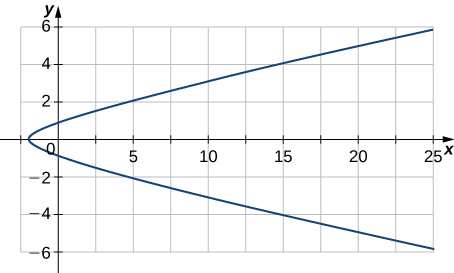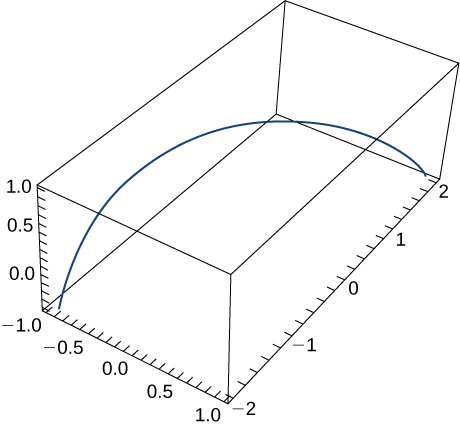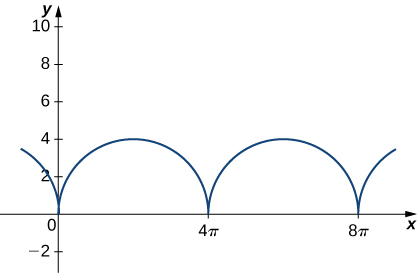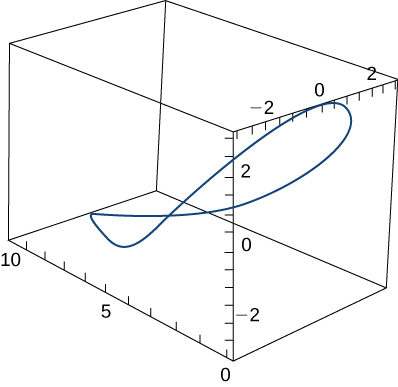| << Chapter < Page | Chapter >> Page > |
Given find the velocity of a particle moving along this curve.

Given find the acceleration vector of a particle moving along the curve in the preceding exercise.
Given the following position functions, find the velocity, acceleration, and speed in terms of the parameter t .
Find the velocity, acceleration, and speed of a particle with the given position function.
The graph is shown here:

The position function of an object is given by At what time is the speed a minimum?
Let Find the velocity and acceleration vectors and show that the acceleration is proportional to
Consider the motion of a point on the circumference of a rolling circle. As the circle rolls, it generates the cycloid where is the angular velocity of the circle and b is the radius of the circle:

Find the equations for the velocity, acceleration, and speed of the particle at any time.
A person on a hang glider is spiraling upward as a result of the rapidly rising air on a path having position vector The path is similar to that of a helix, although it is not a helix. The graph is shown here:

Find the following quantities:
The velocity and acceleration vectors
The times, if any, at which the glider’s acceleration is orthogonal to its velocity
Given that is the position vector of a moving particle, find the following quantities:

Notification Switch
Would you like to follow the 'Calculus volume 3' conversation and receive update notifications?